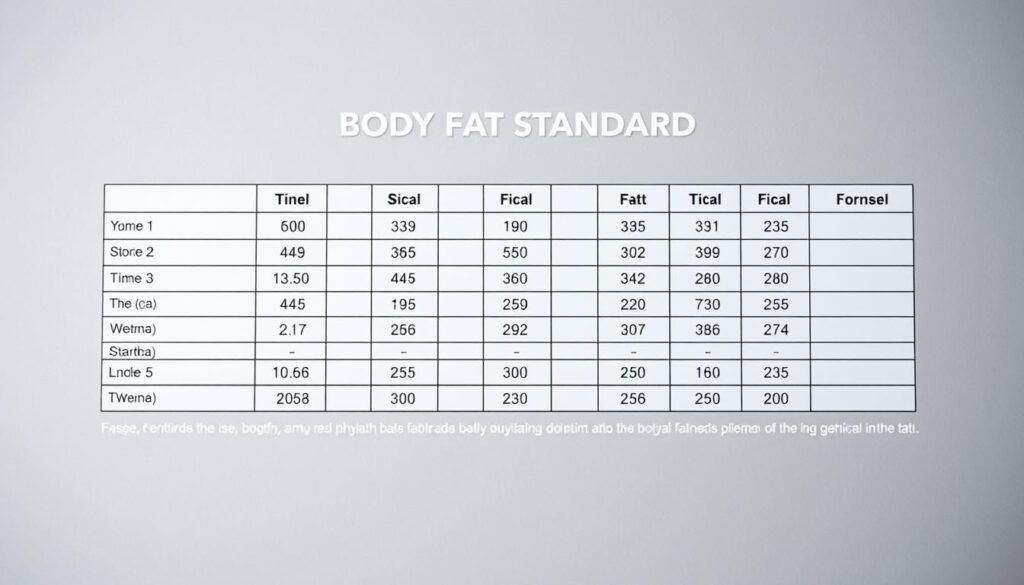What if one wrong measurement could disqualify you from meeting fitness standards? Many assume body weight alone determines eligibility, but the truth is far more precise. The military’s body composition evaluation relies on specific metrics to ensure fairness and accuracy. Let’s unpack how this process works—and why those details matter.
To determine body fat percentage, the military uses a formula based on height, weight, and circumference data. Men and women follow slightly different protocols, with women’s assessments including hip measurements. Proper technique is critical: standing straight, using non-stretchable tape, and positioning the tape at exact anatomical points.
Why does this matter? Even a half-inch error in neck or waist circumference can skew results. The guidelines, outlined in Army Regulation 600-9, prioritize consistency. Reliable tools like fiberglass tapes ensure measurements aren’t stretched or compressed. Age also plays a role, as standards adjust for natural metabolic changes over time.
We’ll guide you through each step, from measuring correctly to understanding how the numbers translate to your fitness level. Ready to learn what it takes to meet—and maintain—these requirements?
Key Takeaways
- Neck and waist measurements are essential for calculating body fat percentage in military assessments.
- Proper technique includes standing straight and positioning the tape at specific anatomical landmarks.
- Non-stretchable fiberglass tapes are recommended for accurate circumference readings.
- Age and gender influence how results are interpreted within military standards.
- Formulas derived from official regulations ensure consistency across evaluations.
Understanding the HT WT Army Calculator
Accurate body composition analysis starts with precise numbers. While many focus solely on weight, military standards use a specialized formula combining multiple metrics. Let’s explore how this system works and why every inch matters.
What Measurements Are Needed
Three key metrics determine body fat percentage: height, neck, and waist circumferences. Height is measured without shoes, standing straight against a wall. For neck circumference, position the tape horizontally below the larynx. Men measure their waist at the navel, while women use the narrowest part above it.
How the Calculator Assesses Body Fat
The military uses gender-specific equations. For males, it’s:
%BF = (86.010 × log10(waist – neck)) – (70.041 × log10(height)) + 36.76
Females follow a similar formula but include hip measurements. Non-stretchable fiberglass tapes ensure consistency—cloth or plastic tapes stretch, skewing results. Even a 0.5-inch error in neck readings can alter body fat calculations by 1-2%.
Why does this precision matter? The army’s standards leave little room for error. Proper technique ensures fair evaluations, whether using the traditional multi-site method or newer one-tape approaches. We recommend practicing measurements with a trained partner to nail the exact tape placement.
That HT WT Army Calculator – does it include neck and waist measurements?
Getting your measurements right could mean the difference between passing or failing military fitness evaluations. We’ll walk you through the exact process professionals use—because guessing won’t cut it here.
Step-by-Step Instructions for Taking Measurements
Grab a fiberglass tape—cloth stretches, plastic breaks. Stand straight with feet together, shoulders relaxed. For neck circumference:
- Place the tape horizontally below the Adam’s apple
- Keep the tape snug but not tight
- Record to the nearest half-inch
For waist readings:
- Males: Measure at the belly button level
- Females: Find the narrowest point above the navel
- Exhale normally—no stomach sucking!
Following the US Army’s Standards
Army Regulation 600-9 demands three key practices:
- Two-person teams for cross-checking accuracy
- Metric and imperial units accepted
- Tape parallel to the floor during all readings
Common mistakes? Tilting the tape or measuring over clothing. A partner helps spot these errors. Remember: Your body fat percentage hinges on millimeter-level precision. Follow these steps religiously, and you’ll mirror the military’s rigorous assessment process.
Understanding Army Body Fat Formulas and Standards
Military body composition standards rely on precise mathematical models. These equations account for biological differences between genders and age-related metabolic changes. Let’s break down how these formulas work and what your numbers mean in practice.

The Formula for Men and Women
Males use this equation from Army Regulation 600-9:
% Body Fat = (86.010 × log10(waist – neck)) – (70.041 × log10(height)) + 36.76
Females follow a modified version that adds hip measurements. Their formula considers the narrowest waist point and fullest hip circumference. This adjustment reflects typical fat distribution patterns in women.
The Impact of Age and Gender on Results
Body fat allowances increase with age for both genders. Soldiers aged 17-20 have the strictest limits:
- Males: 20% max
- Females: 30% max
By age 40+, thresholds rise to 26% for men and 36% for women. These adjustments recognize natural metabolic slowdowns while maintaining combat readiness standards.
Interpreting Your Results
Compare your calculated percentage to the Army’s age-specific tables. If you’re over the limit:
- Recheck measurements for tape placement errors
- Focus on nutrition before intense cardio
- Allow 90 days between official assessments
Remember – these formulas favor consistency over guesswork. Proper technique matters more than squeezing the tape tighter. With practice, you’ll master the process military professionals use daily.
Conclusion
Mastering military fitness standards starts with precision. Proper body composition analysis requires three core metrics: height, waist, and neck circumferences. Using non-stretchable tape ensures consistency, while gender-specific formulas account for biological differences in fat distribution. Remember—even minor errors in tape placement can alter results by 1-2%.
Following Army Regulation 600-9 guidelines guarantees fair evaluations. Whether using the updated one-site method or traditional approaches, exact measurements matter. Men measure at the navel, women at the narrowest waist point. Always stand straight and exhale naturally during readings.
Need help tracking progress? Our Army Height and Weight Calculator simplifies the process. Recheck your numbers monthly to spot trends. Age-adjusted standards recognize metabolic changes, so stay informed about your bracket.
Ready to take charge of your fitness journey? With practice, you’ll measure like a pro. We’re here to support every step—because meeting standards isn’t just about numbers, but sustainable health.
FAQ
How does the Army’s body fat calculator work?
Our military body fat calculator uses neck and waist circumference (abdomen for males, hips for females) alongside height and weight. These measurements plug into gender-specific formulas to estimate body composition, ensuring alignment with service standards.
Why are age and gender factored into body fat calculations?
Age and biological sex impact metabolism and fat distribution. The Army’s formula adjusts thresholds to account for these differences, creating fairer assessments across diverse groups while maintaining readiness requirements.
What tools do I need to take accurate measurements?
You’ll need a flexible tape measure and a reliable scale. For males, measure the neck and abdomen at the navel. Females add hip circumference. Ensure the tape rests flat without compressing skin for consistent results.
Can incorrect measurements affect my eligibility?
Absolutely. Even small errors in neck, waist, or hip sizing can skew your body fat percentage. We recommend practicing proper technique and having a trained professional verify your numbers before final submission.
What happens if I exceed the allowed body fat percentage?
Exceeding limits may require enrollment in a fitness program or temporary disqualification. However, our calculator helps you track progress, giving actionable insights to meet standards through diet, exercise, or medical guidance.


